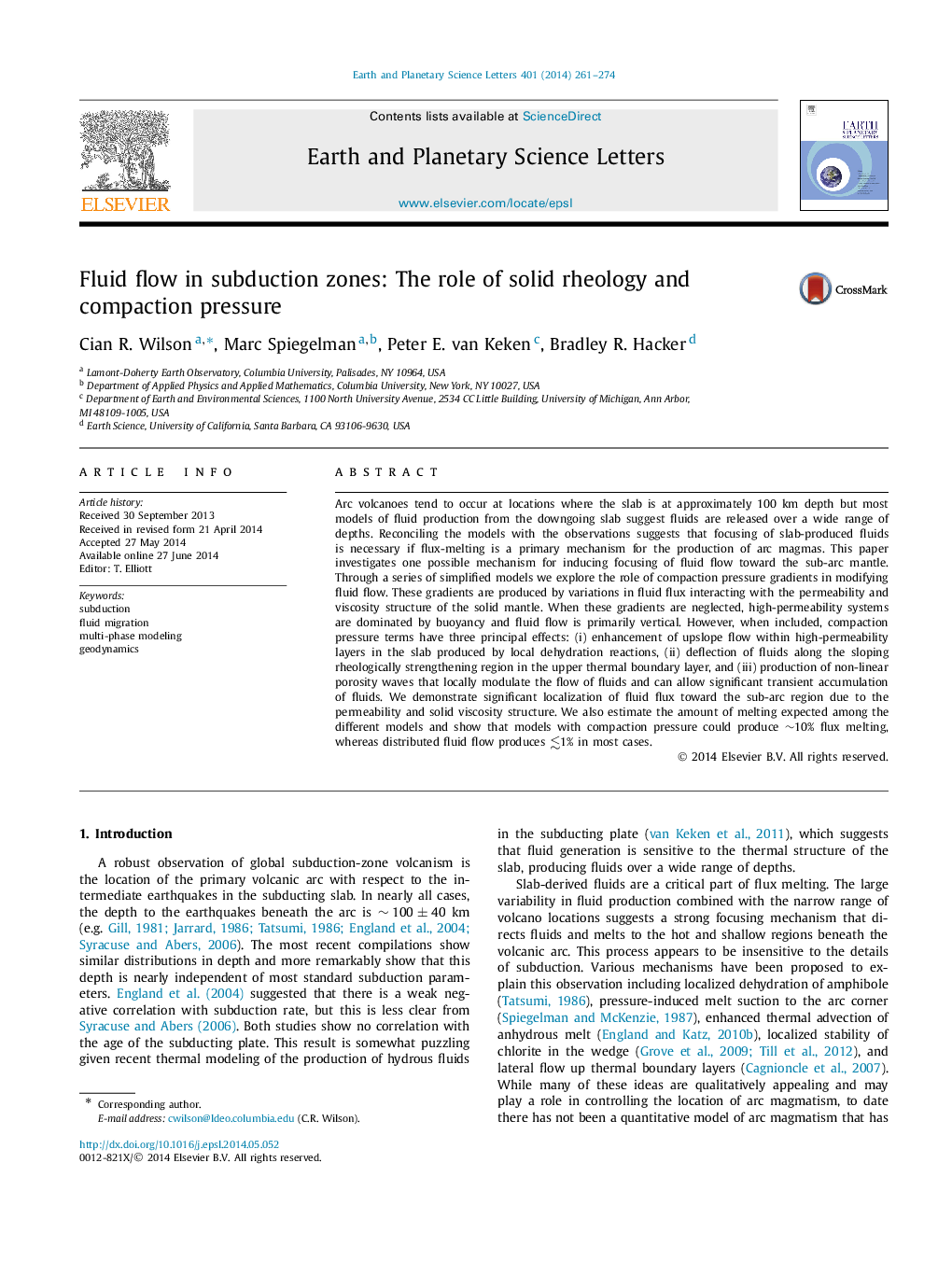| کد مقاله | کد نشریه | سال انتشار | مقاله انگلیسی | نسخه تمام متن |
|---|---|---|---|---|
| 6429209 | 1634755 | 2014 | 14 صفحه PDF | دانلود رایگان |
- Fluid migration with and without compaction pressure is modeled in a subduction zone.
- Multiple, thermodynamically consistent, distributed fluid sources are used.
- Compaction pressure focuses the fluid towards the arc.
- Compaction channels drive fluid upslope underneath the overriding plate.
- High-permeability layers in the slab drive fluid toward the shallowest source.
Arc volcanoes tend to occur at locations where the slab is at approximately 100 km depth but most models of fluid production from the downgoing slab suggest fluids are released over a wide range of depths. Reconciling the models with the observations suggests that focusing of slab-produced fluids is necessary if flux-melting is a primary mechanism for the production of arc magmas. This paper investigates one possible mechanism for inducing focusing of fluid flow toward the sub-arc mantle. Through a series of simplified models we explore the role of compaction pressure gradients in modifying fluid flow. These gradients are produced by variations in fluid flux interacting with the permeability and viscosity structure of the solid mantle. When these gradients are neglected, high-permeability systems are dominated by buoyancy and fluid flow is primarily vertical. However, when included, compaction pressure terms have three principal effects: (i) enhancement of upslope flow within high-permeability layers in the slab produced by local dehydration reactions, (ii) deflection of fluids along the sloping rheologically strengthening region in the upper thermal boundary layer, and (iii) production of non-linear porosity waves that locally modulate the flow of fluids and can allow significant transient accumulation of fluids. We demonstrate significant localization of fluid flux toward the sub-arc region due to the permeability and solid viscosity structure. We also estimate the amount of melting expected among the different models and show that models with compaction pressure could produce â¼10% flux melting, whereas distributed fluid flow produces â²1% in most cases.
175
Journal: Earth and Planetary Science Letters - Volume 401, 1 September 2014, Pages 261-274
